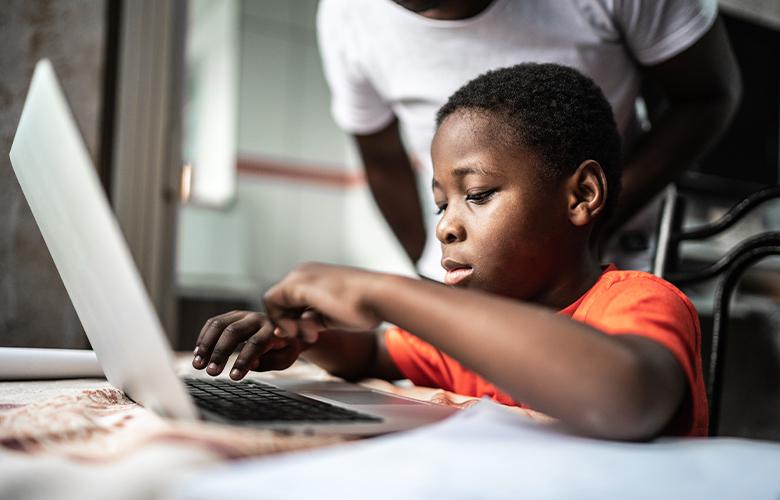
When school buildings closed in March, educators and parents were thrown into new educational waters. After a summer of contemplating this reimaged landscape, school plans are beginning to be floated. This instructional renovation will require a lot of innovation. While this remodel is still emerging, it is clear that whether teaching should be in-person or virtual is not the only consideration. Regardless of learning environment, there are key considerations around the best uses of synchronous and asynchronous teaching and learning, the importance of non-cognitive skills to successful learning, and the need for children to have social interactions and emotional support.
Synchronous and Asynchronous Teaching and Learning
Live virtual teaching can be informed by thinking about learning that is best suited to in-person instruction and how interaction can be maintained through a screen (e.g., nonverbal signals). Digital tools can support breaking into small groups to continue effective pedagogical practices (e.g., think-pair-share). Similarly, asynchronous remote learning may be best suited to project-based learning activities or recorded activities that build home routines. Research over the last decade on the flipped learning model (lessons are recorded and watched independently; classroom time is for collaboration, mentoring, and problem-solving) can provide guidance on the balance between live and recorded instruction. Furthermore, PBS programming can overcome challenges of limited broadband Internet or device access.
Non-Cognitive Skills
We know the importance of executive function skills, such as time management, maintaining focus, and avoiding distractions, for general academic success. However, they are also critical when learning happens independently or remotely. Teachers support students in developing and applying these skills, but younger students are not developmentally ready for this. Some parents with sufficient means are resorting to pandemic pods. Schools can utilize this idea to support remote learning, particularly for their most vulnerable students, while avoiding the inequities resulting from such experiments outside of the public school system.
Social and Emotional Learning
Beyond academics, schools provide opportunities for socializing and emotional support. While some students are thriving in the absence of the pressures associated with peer interactions and the opportunities for more individualized participation (e.g., private recordings to teachers with Flipgrid), many students are missing friends, and parents are desperate for other adults to support their children. Furthermore, the pandemic and the heightened awareness of racial injustice have increased these needs for students. Attention to these risk factors must be included in any reopening plan.
To address these areas, we need conversations to build our collective wisdom and inform the infrastructure of this new enterprise across all learning environments.
| Deborah Rosenfeld is a senior research associate at the Center for Children and Technology at EDC, where she designs and studies digital and hands-on materials to support early learning, especially in the areas of STEM. |


Add new comment